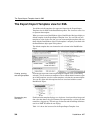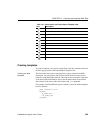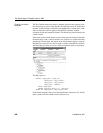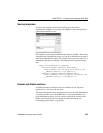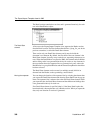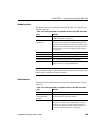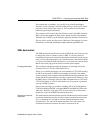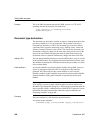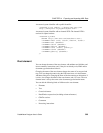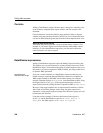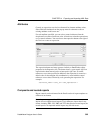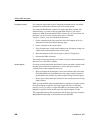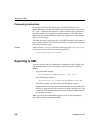
Editing XML templates
392 DataWindow .NET
Example
This is an XML declaration that specifies XML version 1.0, UTF-16LE
encoding, and that the document can stand alone:
<?xml version="1.0" encoding="UTF-16LE"
standalone="yes"?>
Document type declaration
The document type declaration contains or points to markup declarations that
provide a grammar for a class of documents. This grammar is known as a
document type definition, or DTD. The document type declaration defines
constraints on the sequence and nesting of tags, attribute values, names and
formats of external references, and so forth. You can edit the document type
declaration to change its name, but the name must always be the same as the
name of the root element. Changing the name in either the document type
declaration or the root element automatically changes the name in the other.
Adding DTDs
You can add an identifier pointing to an external DTD subset, and you can add
an internal DTD subset. If you supply both external and internal subsets, entity
and attribute-list declarations in the internal subset take precedence over those
in the external subset.
Public identifiers
An external identifier can include a public identifier that an XML processor
can use to generate an alternative URI. If an alternative URI cannot be
generated, the URI provided in the system identifier is used. External
identifiers without a public identifier are preceded by the keyword
SYSTEM.
External identifiers with a public identifier are preceded by the keyword
PUBLIC.
Exporting metadata
If you specify a system or public identifier and/or an internal subset in the
Document Type Declaration dialog box, a DTD cannot be generated when the
data is exported to XML. A MetaDataType of XMLDTD! is ignored. For more
information about the properties that control the export of metadata, see
“Exporting metadata” on page 404.
Examples
These are examples of valid document type declarations.
An external system identifier:
<!DOCTYPE d_dept_listing SYSTEM "d_dept_listing.dtd">



